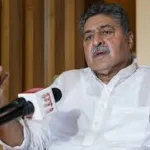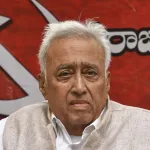January 1989. Our Royal Nepal Airlines flight tore through the sky, taking off from New Delhi’s Indira Gandhi International Airport at 9:30 AM. Our destination was Kathmandu, the fabled capital of Nepal, a city of temples nestled in the heart of the Himalayas. The anticipation was electric.
An hour into the flight, as we soared above an overcast Lucknow, the pilot’s voice crackled over the intercom, announcing heavy rains and turbulence ahead. The warning was an understatement. The aircraft began to shake violently, and the world outside vanished into a soupy, gray haze. Time seemed to warp as the plane dropped precipitously, a terrifying moment of weightlessness gripping us all. Then, just as suddenly, a second drop revealed the runway of Kathmandu’s airport, a welcome sight that drew whistles and applause from every passenger as we touched down safely.
The initial shock of the flight soon gave way to the sensory overload of Kathmandu itself. The city was a living, breathing mosaic of sights and sounds. However, an encounter in one of the main markets proved overwhelming. The sight of freshly chopped animal heads, a candid part of daily life for the locals, deeply unsettled my wife. She felt so nauseated that she couldn’t bring herself to eat for the rest of the day.
The next morning, after a light, hesitant breakfast, we set out, hoping to find a pleasant hotel for lunch on the New Road. As fate would have it, we came across a Kashmiri trader, Mr. Bashir Ahmed Wani. We were complete strangers. After a brief introduction, he learned that my wife had barely eaten. Without a moment’s hesitation, his face filled with concern, he insisted we abandon our lunch plans. “You will come with me,” he said, with a warmth that was impossible to refuse.
He took us to his home right there in Kathmandu, where he personally cooked a special lunch for us. It was a delicious, authentic meal, but it was the love and care with which it was served that truly nourished us. He treated us not as strangers, but as family. He even packed the leftovers, ensuring we would have a comforting dinner that evening. This incredible act of kindness, from a man we had met just hours before, became the defining moment of our trip. It saddens me deeply to know that Mr. Bashir Ahmed Wani passed away a few years later. May he rest in peace.
The Enduring Legacy of Welcoming People
Mr. Wani’s profound hospitality was our first, heartfelt introduction to the enduring legacy of the Kashmiri community in Nepal. Living in the capital, some 3,000 people proudly claim their Kashmiri origin. For over 650 years, more than 500 families have maintained their distinct identity in this foreign land, preserving their cultural heritage, often by not marrying outside their clan.
This community traces its history back to the 15th century AD and a Sufi saint named Miskeen Shah Kashmiri. He, along with his nephew, journeyed on foot from Shopian, Kashmir, to spread the message of Islam. Legend holds that they earned the king’s favor by using their spiritual insight to trace his stolen elephant hundreds of kilometers away and bring it back. As a reward, the king granted them land for a mosque, which today stands as the largest mosque in the heart of Darbar Marg.
Over the generations, Kashmiri descendants have become integral to Nepali society, contributing in countless fields. Notable figures include Syed Anwar Shah, a former Ambassador; Dr. Moiun, a distinguished doctor; and Engineer Shamim Shah, a prominent figure in the engineering community, and Mohammad Ghallib Tangou, a martial art promoter among many others.
As we explored Kathmandu, we also paid our respects to the historic figure of Begum Hazrat Mahal, a brave leader who fought against the British and declared her son the Nawab of Awadh. After being forced to flee India, she found asylum in Nepal, where the then king graciously offered her shelter. She eventually passed away in Kathmandu, leaving behind a legacy of courage and resilience. Her story is a testament to the strong historical ties between the Indian subcontinent and Nepal.
Of course, time ushers in change. According to some community members, the younger generation is increasingly marrying outside the clan, including to Chinese, Buddhists, and Nepali partners, reflecting the evolving nature of this historic community.
As we ventured beyond Kathmandu, Nepal’s breathtaking landscapes unfolded before us. We marveled at the majestic Mount Everest, the highest peak in the world, standing tall at 8,848 meters. The serene lakes of Pokhara, the ancient city of Bhaktapur, and the lush Chitwan National Park, home to majestic rhinos and Bengal tigers.
(The writer is an author and formal civil servant. Feedback: [email protected])






